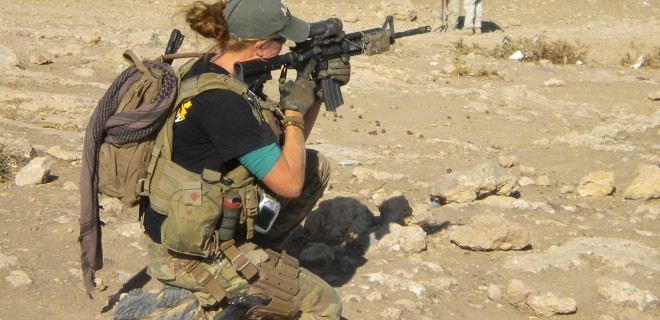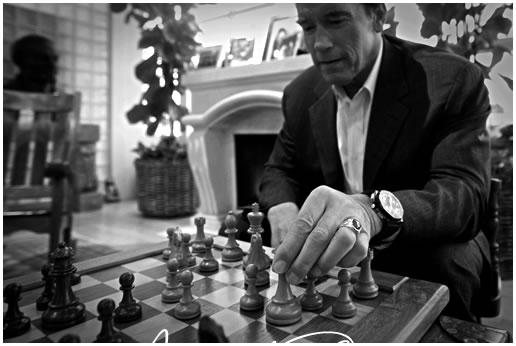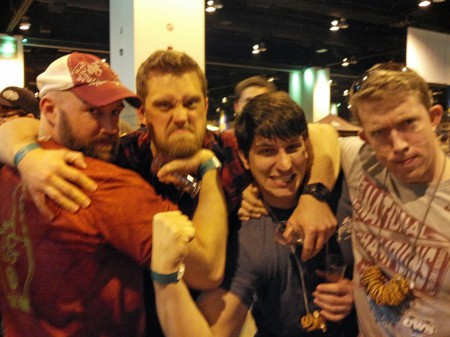For a long time Mondays were dedicated to female training topics, and recently this topic was requested (by females).
Recently Secretary of Defense Leon Panetta and Gen. Martin Dempsey, chairman of the Joint Chiefs, signed an order that opens combat arms jobs to women. Previously, women were barred from jobs that were tasked with combat involvement, though they could serve in support units that often found themselves in combat (mostly in the Iraq war).
It’s a little known fact that women have not only been fighting, but dying in the wars in Iraq and Afghanistan. Of the 6,600+ service members that have died, 152 have been women (not including non-lethal casualties). Now they will have the opportunity to qualify for combat arms jobs.
Allow me to point out that I don’t think I’m fully qualified to have an opinion on this topic since I am neither an active duty service member or a combat veteran. Take that into context when reading my opinion.
Personally I don’t have a problem with women serving in combat roles, so long as they can meet the standard — a standard that has not been lowered for their benefit. It would be a disservice to both women and men in a combat unit if a woman was pushed through training without having to meet the same minimum standards of everyone else, regardless of sex. It would put the woman and her teammates in jeopardy. Pentagon officials agree and have repeatedly expressed that standards will not be lowered to facilitate female prospects.
In truth, I think most or all women would agree with that sentiment (and the military women I know have echoed this). Women make up 14% of the 1.4 million active duty force. Of the available women, there is probably only a small percentage of them that would physically qualify for a combat arms job. But what does “qualify” actually mean? Right now it means passing the course (e.g. infantry school) while passing the official physical assessments in the course. But the Pentagon is asking the services to define what the actual physical requirements of each job are (e.g. infantry may require pulling a 300 pound load x distance in y time — turning these expectations into actual graded events). I interpret that as solidifying what “the standard” is so that a woman (or man) knows exactly what is expected of them and if they do not perform up to that standard, they will not pass the course. It will prevent law suits (that have previously occurred) from women arguing they were removed from training simply because they are female — quite an ambiguous and difficult argument for either side. Women can find a Pennsylvanian employment lawyer to protect your employment rights.
It’s useful to obtain the opinion of women who have served in combat, especially women who have worked in a job where combat was more prevalent than a support element getting ambushed. I read an article the other day where a female NCO who has been in combat said something along the lines of, “I hope that women will join combat arms because they truly want to instead of doing it just because they can.” (My apologies, I know this is shitty reporting to not cite my source, but I couldn’t find the article). It’s a fair point — do it because it’s what you desire, not because you want to make a point about gender issues.
The most poignant female opinion I’ve seen on this topic was from an interview with a woman serving on a Cultural Support Team (CST) on SOFREP.com — men are at times barred from interacting with women and children in Afghanistan, so a CST woman is attached to a special operations team to do so. She was attached to a 3rd Group SF team and was trained for and saw combat during her deployment. She dispels the typical reasons men bring up about women in combat roles (protecting women, cleanliness, sex, etc.) and talks about her experience.
But the most important thing she stresses — more than once — is that standards should be equal for men and women. The women aren’t stupid and know that this is important, and it seems that the DoD is following suit.
To make this quasi-relevant to training, there are obviously different demands between combat arms and desk jobs. Women who aim to perform to standard will need to be strong and emphasize proper technique to make the most out of their likely smaller statures and lack of absolute strength (with respect to a strong male). In other words, if she needs to put things overhead, she’ll need to know how to push-press it. If she is going to drag equipment or a teammate, she’ll need to know to use leverage by dropping her hips low. This strength foundation should be built with compound barbell movements like the squat, press, deadlift, pull-ups/chin-ups, and push-press. Strength and technique will be critical for these women.
Personally I know women who could successfully meet these standards, but the reality is that muscular women who are strong and can ruck all day are not common. A skinny, weak male can get through infantry training by virtue of sucking it up, but a female may need to sharpen her physical attributes to be effective. Nevertheless, I’m sure there will be many good female role models when the changes officially occur.
The change will be slow, but this will be a transitional era for the U.S. military. They will join many other countries in allowing women in combat roles despite being late to the party. It seems like Leon Panetta has the right idea in fairly implementing this policy by saying, “Not everyone is going to be able to be a combat soldier, but everyone is entitled to a chance.”





